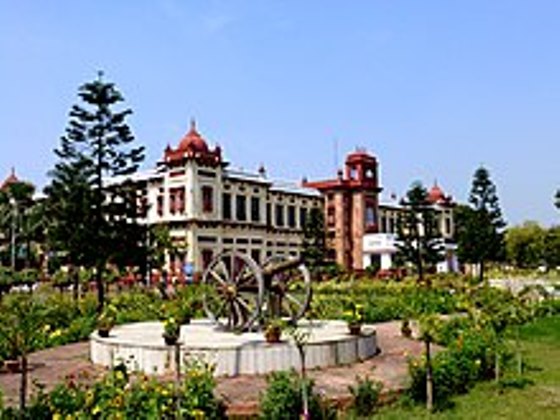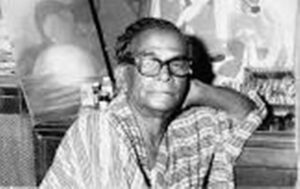Change font size -A A +A ++A

Patna Museum
Our Bureau/
Jaya Sankrityayana Parhawk, a resident of Dehradun who happens to be the daughter of Mahapandit Rahul Sankrityayana vividly depicted how in Bihar the practice of neglecting glorious history of past or forget the memory of renowned sages from this land become very common; even in the government norms!
Jaya has been struggling for the last few years in drawing the attention to the way the valuable documents and collections of her late father Rahul Sankrityayana are not safe as it ‘dumped’ in Patna museum and the Bihar Research Society.

Mahapandit Rahul Sankrityayana.
Jaya has alleged that the valuable documents which her father collected from various places including Tibet and brought the load to India on the back of a mule has been the victim of neglect and apathy. She earlier given several letters to Bihar’s chief minister and concerned high ranking state officials. Her letters became viral in social media and now many people have started sharing Jay’s facebook posts (read her letters) to their walls.
She points out that her late father made a conditional gift of the fruits of his four intrepid journeys to Tibet and to other places on the subcontinent to enrich the study of history and Buddhist studies from primary sources . The collection consists of rare texts and xylographs, coins, photo-plates, statues and valuable thangkas. The veteran scholar considered those to be the heritage of this country, not just of the state of Bihar. Since 1933 when the first contributions were made by him the collections are acknowledged as the pride of the museum but except for the early years when the doyens of historical studies undertook their research and wrote their learned treatises it was starved of funds and qualified research assistants and therefore underutilized. This is such a descent from a time when the halls, galleries and offices on the premises were inhabited by eminent scholars and serious students engaged in academic discourse.
Jaya who strongly protested to the chief minister, Bihar, a move by the state government in 2017 when it was proposed that items from the collection be moved piecemeal to the to-be-inaugurated private Bihar Museum. This would have disturbed the integrity of the collection that needed to be studied in context, she alleged. Eminent historians had joined in protest and proposed that the collection be treated as the core around which a Centre for Buddhist and historical studies be set up on the premises of the Patna Museum. Due to the protest Rahul’s collection remained in Patna museum although many of the antiquities from the museum were relocated.
“In March this year another disturbing report reached me that the collection was to be moved to Bihar Museum. As the donor’s family our wishes in this respect on both occasions were not sought. My letter to the chief minister citing our pain at the way the memory and contribution of my father to Bihar were being dishonoured met with no reply. Random statements from various sources surfaced in the media that I had been misinformed and that there was no such proposal were contradicted by published gazette notifications about the administration and affairs of Patna museum, a state museum being placed in the hands of the new Bihar Museum and its eminences. The Bihar Research Society’s status is already moot,” Jaya alleged.
She further said that she came across a report in the media regarding the delay in the release of the translations of a few texts by, The Central Institute of Higher Tibetan Studies (CIHTS- The Deemed University) at Sarnath, Varanasi (CIHTS). According to her those texts are part of the corpus of the texts that her late father had restored to India to enable deep study of India’s history and philosophical traditions. Those texts in their Sanskrit originals had been lost after the destruction of the ancient monasteries. As Buddhism grew in Tibet many of them were translated into Tibetan from Sanskrit. CIHTS had undertaken the translation of fifty of these texts out of which five are now ready for release pending the graciousness of the state government, she said.
“I am astounded by the myopic vision of the people who have sanctioned the project without due deliberation. There are no scholars involved in the project from the Bihar government. Instead in an arbitrary exercise in bureaucratic willfulness the very people who are directly responsible for the destruction of the stature of Patna museum and of the Bihar Research Society are today the self-proclaimed promoters of this project,” she alleged further.
While strengthening the need of promoting the study of the richness of India’s ancient history and culture and the importance of Buddhist studies on the basis of authentic sources, she alleged the two great institutions that are acknowledged pioneers, are in their death throes. She urged to address her concerns and prevent this final disaster from occurring. “Please take the matter on priority basis to investigate how such high-handed interference with public institutions and national heritage by those ill-qualified for the task has been allowed,” Jaya urged media.
Many intellectuals and history buffs expressed their displeasure at the Bihar government’s complete reluctance on such a vital issue. Some of them, however, consider this form of behavior of the Bihar government to be very normal and say that any ancient historical evidences are considered very little here. They narrate a similar incident that happened in the past and show that there are many cases of disrespect of history in the hands of government machineries in Bihar.
According to some eyewitnesses, the year was probably 1997 and the place of incident was in front of the MLA’s flats in the state capital city of Patna. That day it was raining in torrents. Some goods were being loaded in a vehicle in front of the MLA flats. And standing some distance away, a girl was crying with blue eyes !
The girl was none other than Mahasweta (Gopa) Maharathi, daughter of the renowned artist and painter Late Upendra Maharathi of Bihar. Mahasweta cried that day because her father’s rare artworks were not being preserved by the Bihar government due to neglectful policies and insensitivity, which were being sent to Delhi. About 1,000 rare artworks of Upendra Maharathi could not be preserved by the government at his home turf, so they were being loaded into the vehicle to be taken to Delhi.

Late Upendra Maharathi.
Like Jaya, Mahasweta tried hard but ultimately failed to keep her father’s works of art in Bihar properly. The national art gallery, New Delhi established a special art gallery in the name of Upendra Maharathi and preserved his arts there. The whole incident was not only the transfer of rare artworks of a great artist of Bihar rather it was also a painful episode of the uprooting of an important chapter from the pages of Bihar history.
On that day, no politician or concerned bureaucrat in Bihar could feel any regret for that great historical loss of Bihar. In one day, so many works of famous artists like Upendra Maharathi went out of Bihar, not a single finger of protest was raised? If this happened in any other state, no matter what anyone else did, the common people would have set that very state on fire. Stealing and selling rare Mughal paintings from Patna Art college for a few bucks, filling the excavation site of Kumrara with sand, calling the archaeology office in front of Patna Art College as “Patthar ki office by local people as it has many past art artifacts in its range along with other many events, no conservation step taken after Lali Pahari excavation at Lakhisarai and many more such instances are possible only in Bihar, history lovers alleged.
The plight of the Vikramshila ruins is yet another glaring sign of the government’s indiscretion. Today while tourism is promoted abroad as a luxury business, world famous tourist sites like Vikramshila are left uncared for in Bihar.
The new generation in Bihar doesn’t know Birth place of famous painter Nandalal Bose in Munger district or George Orwell’s birthplace at Motihari, as we failed to restore their memories there. Similarly From Sarat Chandra to Mahasweta Devi or HLV Derozio, there is a long list of many sages working in almost every district in Bihar but do their memories survive today?
This idiocy of ours not only doing injustice with history but also depriving the new generation of Bihar’s glorious history.
(All Pixs cutesy Google)



Leave a Reply